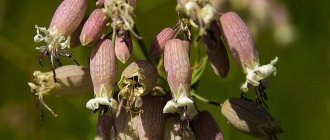Thanks to the huge number of shapes, sizes and colors, chrysanthemums have become very widespread in various parts of the world. Their high decorative value combined with ease of care makes them one of the most sought-after garden flowers, while breeding work to develop new species does not stop. One of the varieties of this perennial is the Indian chrysanthemum, which, unlike its Korean relative, is grown mainly in closed ground conditions.
Description of chrysanthemum indicum
Indian chrysanthemum was previously found growing wild in the territory of modern China, in areas with a subtropical climate. All varieties of this plant have retained its species characteristics.
The Indian species has many varieties and colors
Here is a brief description of Indian chrysanthemum:
| Parameter | Meaning |
| Plant type | Perennial herbaceous plant, family Asteraceae (Asteraceae). |
| Escapes | Smooth, straight, green, 0.3-1.5 m high, depending on the variety. |
| Leaves | Heavily dissected, jagged. The leaf blade is greenish-gray, dense, fleecy. |
| Root system | Powerful, well developed, forming a large lobe. |
| Flowers | An inflorescence-basket of chamomile type, consisting of a central part with tubular flowers and bordering flat petals of various colors and shades. The size of the inflorescences depends on the variety and can reach up to 25 cm in diameter. |
| Fruit | Small oblong ribbed brown achenes. |
| Flowering time | Autumn. |
Important! The name "Indian" is not directly associated with India. In the Middle Ages, everything that came to Europe from the East was often called “Indian”.
Diseases and pests
Indian chrysanthemums have relatively good immunity, but they can suffer from various diseases and pests:
- White rust is a fungal infection that manifests itself as round yellowish spots on the leaves that eventually turn into rot.
- Powdery mildew is another fungal disease that causes the leaves of Indian chrysanthemums to become covered with a white coating.
- Brown aphid is an insect that feeds on young leaves, as well as buds, which has a bad effect on flowering.
- Spider mites are an inconspicuous pest, the presence of which can be determined by a thin web on the stems, on the underside of the leaves.
In summer, plants need to be regularly inspected for pests.
To prevent and treat fungal diseases, Indian chrysanthemum bushes are treated with fungicides, for example, Bordeaux mixture, HOM, Fundazol and others.
Varieties of Indian chrysanthemum and their description
There are over 10 thousand varieties of Indian chrysanthemums. Among them there are plants with both large, 20-25 cm in diameter, inflorescences, and with small, “button” ones; there are species for open ground and for growing indoors.
Aurora
This variety of Indian chrysanthemum forms a bush about 1 m high and blooms with very beautiful orange flowers. The inflorescences are double, flat, with a diameter of 7 to 10 cm.
The bright orange inflorescences of Aurora look especially beautiful in autumn
Altgold
The bushes of this variety of Indian chrysanthemums are low, up to 0.6 m. The inflorescences are flat, rich yellow, up to 7 cm in diameter. The variety blooms early, the first buds appear on the bushes in the second half of August. Flowering continues until October.
Altgold blooms earlier than others, in mid-August
Artist
This is a potted variety of chrysanthemums that grows as a small compact bush no more than 0.3 m high. Its distinctive feature is the two-color coloring of the petals in the form of longitudinal stripes.
Two-tone paint in the form of longitudinal stripes is the Artist’s calling card
There are also varieties of the Indian Artist chrysanthemum with yellow-brown and orange-red flowers.
Barolo
This variety of Indian chrysanthemums can be grown both in a pot and in open ground. Smooth, straight and fairly powerful shoots of the plant form a dense bush about 0.5 m high. The flower basket consists of red petals surrounding a green-yellow core.
Indian Barolos can be grown as potted plants
Important! The Barolo variety of Indian chrysanthemums was bred specifically for cutting, so it can stay in a vase for up to 3 weeks without losing its decorative effect.
Cleopatra
This chrysanthemum has a very unusual color - terracotta. The petals are colored in such a way that the inflorescences look as if they are illuminated by the bright sun. Cleopatra blooms for a very long time, from August to October, and in the absence of frost, the flowers can be admired in November.
Important! Many landscape designers consider the Cleopatra variety of Indian chrysanthemums ideal for growing in outdoor flowerpots.
The Cleopatra variety has a long flowering period.
Like Worth
Like Worth chrysanthemums are not large in size; their bush height is only about 0.3 m. Simple chamomile-type inflorescences look very impressive due to the bright two-color petals surrounding the greenish-yellow center.
Light Worth - a potted species of Indian chrysanthemums
The variety also has a darker variety - Like Worth Dark
Little Rock
Little Rock is another representative of Indian chrysanthemums, most often grown indoors. The color of the petals is rich wine, with a white border. Little Rock bushes are very small - 25-35 cm.
One of the smallest varieties - Little Rock
Pura Vida
Like many other varieties of Indian chrysanthemums, Pura Vida is most often grown in pots. The height of the bush does not exceed 0.25-0.3 m. The petals in the central part of the inflorescence are bright green, closer to the edge they become lime-colored, with a white edging.
Pura Vida - a variety with an unusual yellow-green color of inflorescences
The meaning of pink chrysanthemums
Chrysanthemums “Alenka”
At all times, any shades of pink, from very light to the most intense, have been a symbol of a carefree, cloudless life, full of love and hope. This color meaning also applies to flowers. Basically, chrysanthemums are given to married women to emphasize respect for them, but pink varieties are an exception. First of all, they talk about falling in love, youth and modesty.
If a young man wants to demonstrate his tender feelings to the girl he likes, he can present her with a bouquet of pink chrysanthemums. Delicate buds will tell better than any words about the sincerity of the donor’s intentions. For a young lady, it is better to choose flowers in light shades; they will emphasize her girlish charm. For older women, a bouquet of richly colored chrysanthemums is more suitable.
Floral arrangements, the main element of which are small bush or single large-flowered pink chrysanthemums, are a modest gift, but at the same time full of inner dignity.
Ways to grow Indian chrysanthemum
Indian chrysanthemums can be grown both in open ground and as potted plants. Many varieties are small in size and can easily grow as indoor flowers. Large species in a suitable climate are grown in open ground; this can also be done in special rooms with an artificial microclimate - winter gardens, greenhouses.
Growing Indian chrysanthemum in open ground
Heat-loving Indian chrysanthemums are planted in open ground only with the onset of real warmth in order to completely eliminate the possibility of return frosts. After flowering ends, the shoots are cut off at a height of 15-20 cm from the ground, and the bushes are dug up, put into wooden boxes, covered with sand and taken to the basement for wintering. There they are stored all winter without watering at a temperature of 0-2 ° C, and after the arrival of warmth they are planted again in the garden.
Growing and caring for Indian chrysanthemum at home
Indoor Indian chrysanthemums are less resistant to the vagaries of the weather and require increased care. The height of potted species does not exceed 0.7 m, they do not take up much space. They usually bloom very late, in the fall, when many indoor plants are already in hibernation. Unlike many plants, indoor Indian chrysanthemums do not require elevated air temperatures. On the contrary, it is necessary to ensure that this indicator is within 15 ° C, so it is best to place flower pots on windows facing north.
Planting and caring for terry chrysanthemum indicum
Indian chrysanthemums are brought into open ground as seedlings, which can be purchased at a specialized store or grown independently using seed or vegetative methods.
Important! When propagated by independently collected seeds, the varietal characteristics of chrysanthemum may not be preserved.
Selection and preparation of a landing site
For chrysanthemums, you should choose an open sunny place; these plants do not like shade. The soil on the site should be loose, moderately moist, with good air permeability. You should not plant chrysanthemums in swampy and flooded areas; it is better to give preference to a small hill. If the soil is too clayey, sand or other drainage material should be added, and the area should be fertilized with humus or peat. The PH level should be close to neutral. You can reduce the acidity of the soil by adding dolomite flour or chalk.
Landing rules
Indian chrysanthemums are planted in May, and sometimes this is done even in June to ensure that return frosts are avoided. All work should be done in cloudy, humid weather, but if it is sunny and dry outside, then planting is done in the late evening. If for some reason it was not possible to plant chrysanthemum seedlings in the spring, then this procedure can be carried out in early September. If the climatic conditions of the region do not allow the plants to overwinter in open ground, then they should be rooted in pots and, after wintering, planted in a permanent place.
Chrysanthemums are planted only after the soil has warmed up.
Planting holes for Indian chrysanthemums must be at least 40 cm deep, since a drainage layer of coarse sand or small pebbles must be poured onto the bottom. It is better to mix the soil with which the roots of the plants will be covered with humus; in addition, you can add a little potassium and phosphorus fertilizers to its composition. The seedling is placed vertically in the center of the hole and carefully covered with soil mixture without deepening the root collar. If the plant is tall, then at first it is better to tie it to a support from wind and rain.
Watering and fertilizing
Water the Indian chrysanthemum moderately; excess moisture can lead to root rot. You need to be guided by the state of the soil layer in the root zone of the plant. Moistening should be carried out only as it dries, which is easily determined visually.
The standard watering rate is approximately 10 liters of water for each adult bush once every 3 days. In wet weather, there is no need to additionally water chrysanthemums. It is advisable to use rainwater for irrigation. If the source is a water supply, then the water should be allowed to sit for at least 2 days before watering.
Indian chrysanthemums need to be fed throughout the season. In spring, nitrogen-containing fertilizers are used for rapid shoot growth and green mass growth. In mid-summer, nitrogen-containing fertilizers are no longer applied. Next, only complex potassium-phosphorus fertilizers are used, which stimulate flowering and bud formation for the next year.
Long-acting fertilizers are much more effective than conventional ones
Important! Many gardeners prefer to use specialized slow-release fertilizers. They are sold in flower shops and used in accordance with the instructions.
Wintering of Indian chrysanthemums
Indian chrysanthemums, even large-flowered ones, can be left for the winter in open ground, but only if the climatic conditions of the region allow this. In this case, the shoots are completely cut off just above the soil level, and then the bush is covered with a thick layer of fallen leaves and spruce branches, and then the shelter is covered with snow. Unfortunately, there are relatively few frost-resistant varieties of Indian chrysanthemums. Therefore, after the onset of the first frost, the bushes are pruned and dug up along with a lump of earth on the roots, taking them to the basement or other room with a suitable microclimate for wintering.
How to shape Indian chrysanthemums
To increase bushiness, pinch the top of an Indian chrysanthemum shoot 2-3 times a season. This stimulates the growth of lateral branches. The last time pinching is done no later than 2 weeks before the first buds appear, otherwise the flowers simply will not have time to form.
Propagation of Indian chrysanthemums
The most common method of propagating Indian chrysanthemums is by seed; seed material begins to be planted around February. Before this, they must be subjected to stratification by keeping them for some time at a low temperature. This will significantly increase their germination and viability. For planting, you can adapt any container that is filled with purchased soil for seedlings or a homemade soil mixture of top soil, peat and sand.
Calcining the soil for seedlings will help avoid the development of diseases
Important! Homemade soil for seedlings must first be disinfected by soaking it for 20-30 minutes in a steam bath or in an oven at 200 °C.
The container for growing seedlings of Indian chrysanthemums from seeds must be filled with the soil mixture almost to the top so that after closing it with glass or film there remains an air gap of 3-5 cm. Before planting, the soil must be moistened with warm water from a spray bottle. The seeds are poured in even rows, keeping an interval of about 10 cm between the strips. You should not cover the seeds with soil; just lightly press them to the soil surface. After this, the container should be covered with a piece of glass or plastic wrap and put in a warm, dark place until shoots emerge.
Important! From time to time, the container should be ventilated and the soil should be moistened, preventing it from drying out.
The first shoots usually appear after 7-10 days. After this, the container with seedlings is transferred to the windowsill. If daylight hours last less than 8 hours, then it is necessary to provide for the possibility of artificially illuminating the seedlings by installing any light source on top. Special phytolamps are very suitable for this purpose, providing light of a certain color spectrum that is most necessary for plants. At the end of spring, seedlings are planted in a permanent place in the garden or planted in pots.
The seed propagation method is simple and effective
Another method of propagating Indian chrysanthemums is cuttings. Cuttings about 20 cm long are cut from mature shoots and rooted in a container with soil mixture covered with film. In such greenhouse conditions, the cuttings quickly form their own root system, after which they are planted.
Features of flowers
Chrysanthemum flowers look like they have many petals, but in reality each petal is a separate small ray or disc flower. What we traditionally call petals are radiant flowers, and the disc inflorescences form the core of the inflorescence. Taken together, all this multitude of flowers creates a common and unified image of a blooming chrysanthemum flower. Colors range from dazzling white to dark bronze. In recent years, breeders have developed chrysanthemums in fancy, lilac, blue and green tones.
Photos of Indian chrysanthemums
Indian chrysanthemums are the real queens of autumn
Indian flowers go well in mixed plantings
An improvised high flower bed with chrysanthemums looks great as an element of garden decor
Blooming Indian chrysanthemums will add color to the garden in autumn
Pots with Indian chrysanthemums can be put indoors for the winter
Indian chrysanthemums can be combined in flower beds in various patterns
What plants are combined with?
Indian chrysanthemums are used to decorate paths, single and composition plantings, and create original patterns in flower beds. Of shrubs and trees, they go well with the following:
- elder;
- Apple tree;
- barberry;
- raspberries;
- sea buckthorn;
- hawthorn.
Among the plants of the same tier you can consider aster, chamomile, decorative asparagus, and dahlias. Indian chrysanthemums also look beautiful next to hostas, which create an attractive presentation. When planning flower beds, it is worth considering that flowers love light. Therefore, sun-loving plants should be selected as companions for them.











